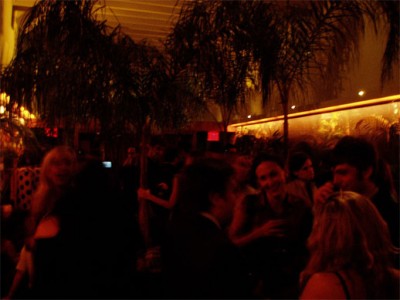The nightclub as the creative economy’s conference room

The previous entry looked at how creative skills + cultural products = creative economy, but where does it all happen? Of course, the actual production occurs digitally via computers and materially in factories, but since people make up a system, how do the entrepreneurs, artists, musicians, financiers, filmmakers, programmers, designers, etc. etc. etc. establish the relationships to make it all happen?
As creatives know, and as Elizabeth Currid states in her book, The Warhol Economy, much of it comes together outside of 9 to 5 ‘work’ hours… in nightclubs, bars and cafes, or in other words, creative third places.
From Elizabeth’s book, “The Bungalow 8 (pictured above) and the SoHo of the creative industries are the Marshallian (specialized, clustered) industrial districts of the Industrial Revolution. And there is something “in the air,” as Marshall put it, these are places where knowledge is exchanged in the most casual but significant capacities. It isn’t just over social engagements like dinner or power lunches but through music venues, gallery openings, and DJ nights that real knowledge and collaborations and product review are occurring.”
Read more in The Importance of Nightlife section of Chapter 5, The Economics of a Dance Floor of Elizabeth’s book, the latter of which is the basis for her article, The Economics of a Good Party.
Image of Bungalow 8, Chelsea, New York City, by Lock.

Leave a Reply